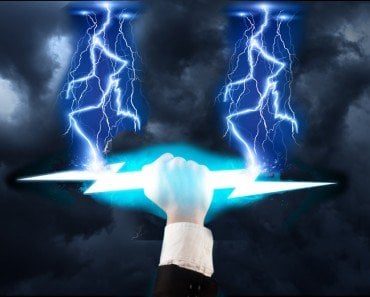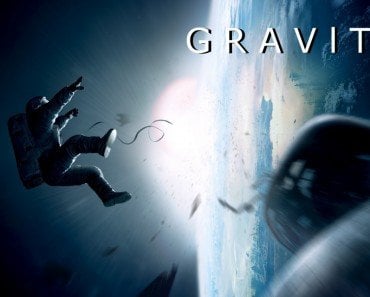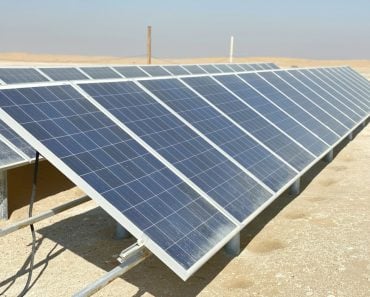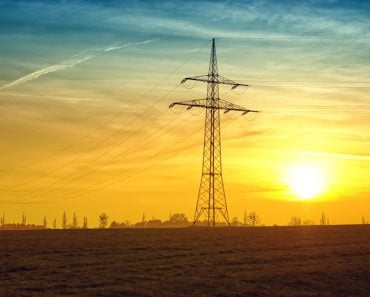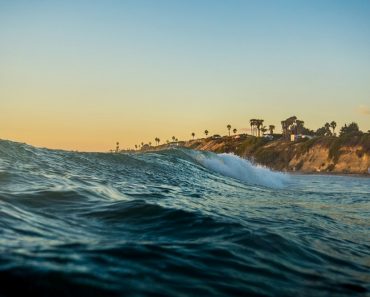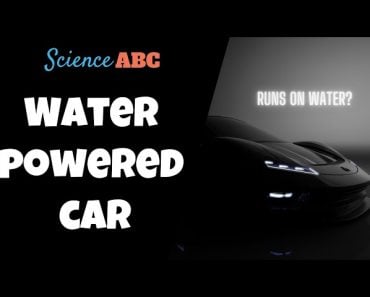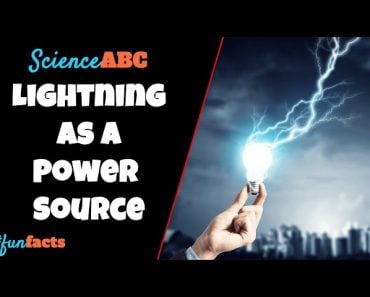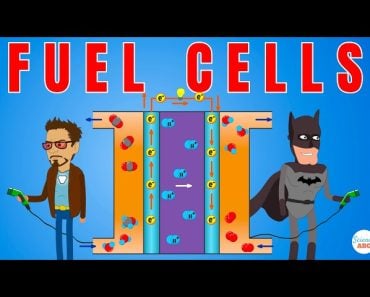The electricity generation scene in the movie “Swades” provides a relatively accurate picture of micro-hydroelectricity projects.
Movies are amongst the most potent sources of entertainment, but every once in a while, a movie comes along that is more inspirational than entertaining, leaving us with a zeal to aspire towards causes greater than ourselves.
One such movie from the Indian box offices is Swades. Released in 2004, it went on to accrue critical acclaim and a cult following.
Recommended Video for you:
Background
Swades (Hindi for one’s own country) is the story of Mohan Bhargava, a successful project manager at NASA. He gives up his cushy job at the prestigious space agency in pursuit of bettering his village, Charanpur, in India.

The salient feature of the movie is the establishment of a self-sustaining hydroelectricity plant in Charanpur without government aid. As the process was recreated in the movie in some detail, its scientific accuracy begs attention, and was the source of some debate.
Basis Of Comparison
A micro-hydroelectricity plant set up in Bilgaon Village, Maharashtra, India is the closest precedent to the movie. However, the set of the fictitious village, Charanpur, is based in another Maharashtrian Village called Wai.
To test the depiction’s accuracy, it is important to know the essential features of such a plant (source).
A micro-hydroelectricity plant uses the mechanical energy of water to generate electricity. It consists of a perennial reservoir (tank, waterfall etc.) that can release water from a certain height. This water is channelled to drive a turbine, which in turn moves a generator.
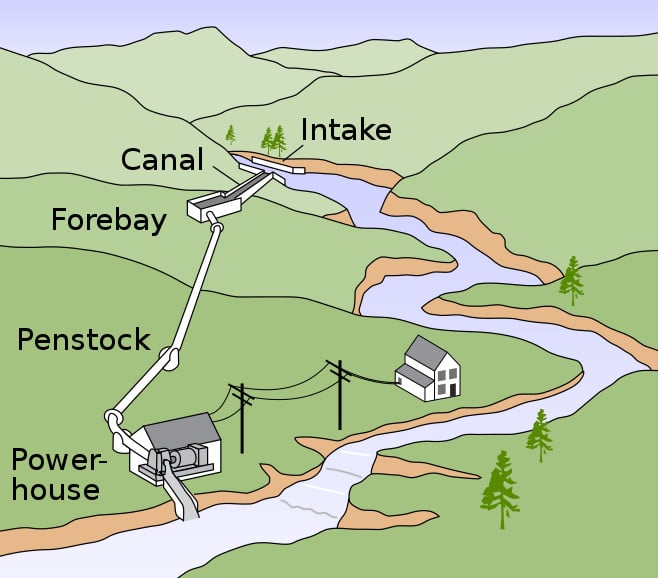
This generator converts the turbine’s motion into electricity, and then supplies it using electrical lines. Here are some noteworthy features of a micro-hydroelectricity plant:
- These plants can generate a power output in the range of 5kW to 100 KW.
- The water source must be situated higher than the generator and turbine, in order to provide the necessary head or pressure differential. The height of the water column causes this pressure differential, giving water its potential energy. Thus, hilly outcrops are preferable for such projects.
- The design of the turbine depends on the pressure differential caused by the reservoir’s height.
- Water is fed to the turbine using a penstock. Penstocks are high-pressure pipelines made of steel. Alternatively, wood and concrete may also be used.
- After the water has moved the turbine, it is removed from the power house through a tail race.
- Micro-hydroelectric power plants are relatively inexpensive to set up and are often done by voluntary laborers, as opposed to contracting agencies.
Depiction In The Movie And Assumptions
The project is initiated with the construction of a square reservoir supplied from a waterfall of dubious origins. This reservoir measuring 5m along each side, and 1m in depth, has a volume of 25m3 or 25000 L.
It supplies a generator rated at 20kW using a metal penstock. This pegs the power generation capacity at 20kW.

Scientific Accuracy Of The Electricity Generation Scene In The Movie
The scientific accuracy of representation is solely judged on inputs from the movie, and corollaries drawn from that point.
Here is a small snippet of the electricity generation scene from the movie.
Flowing Water For Hydro-electricity
The placement of the reservoir is in accordance with the design of a micro-hydroelectricity plant. To establish the pressure head of water owing to the reservoir’s height, we must consider the topographical situation of Wai.
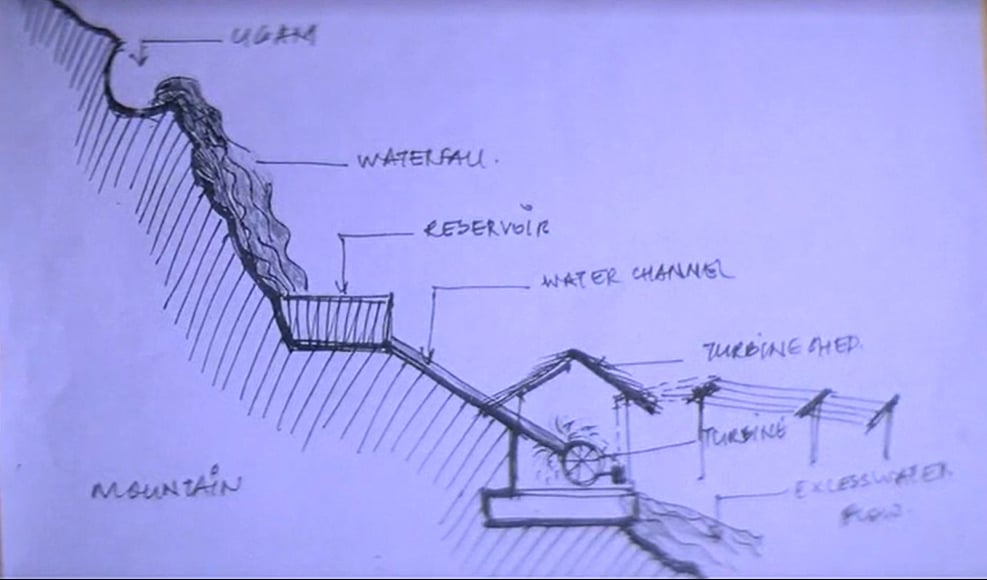
As the reservoir was fed by a waterfall, it can be assumed to be in the vicinity of the modern-day Dam Dam Canal, at a height of 726m above sea level.
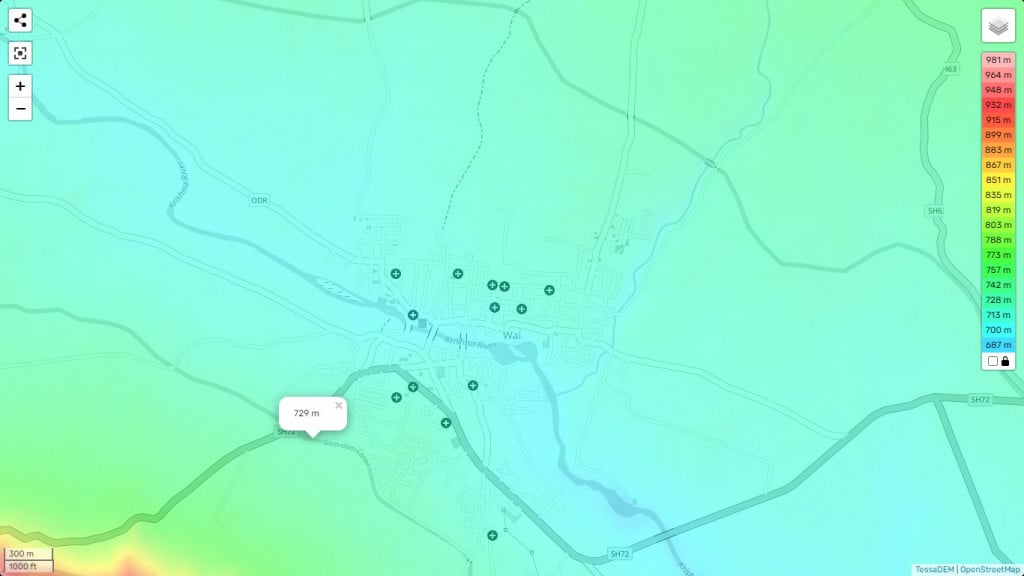
Similarly, the generator can be assumed to be located in the vicinity of the settlements, to reduce transmission losses. The settlements are found at a height of 696m above sea level.
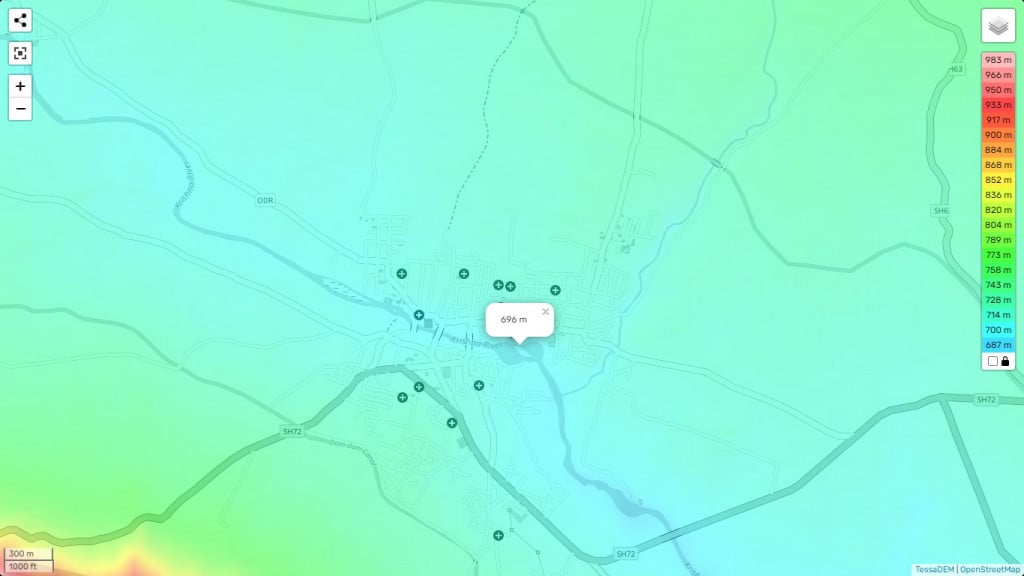
The difference in the lowest and highest altitudes gives us a pressure head of 30m. This head amounts to a total pressure of 294 kilopascals using the formula P = ρgh, where:
- P = Resultant pressure
- ρ = density of water (1000 kg/m3)
- g = acceleration due to gravity (9.81m/s2)
- h = head (30m)
Furthermore, the output power is a product of the total resultant pressure and the flow rate of water. As the output power is capped at 20kW, a flow rate of approximately 0.07 m3/s is obtained.
However, this flow rate would drain the 25m3 reservoir in a little under 6 minutes. As the source of water replenishing the reservoir is of inexplicable origins, there is certain doubt regarding the sustainability of the film’s operation.
Transmission Of Electricity
Electricity passes through a series of contraptions like surge arrestors and transformers for regulated and even transmission. However, micro-hydroelectric plants may often get away without having to use them. Along similar lines, electricity being transmitted at 230V is higher than the standard Indian grid voltage of 220V.

It may be assumed that some voltage is lost in transmission. Yet, if the operating voltage is assumed to be 230V, it does have some implications. If the houses are connected in parallel, this implies a greater load on common appliances, like fans and tube lights. If connected in series, the houses furthest from the grid risk receiving less voltage.
The absence of further clarity, like the electrification of individual homes, makes the practicality of this setup unclear. Another misrepresentation is the illumination of bulbs only after 230V have been achieved. The tungsten filament glows progressively brighter with an increase in voltage after 60V, making this detail inaccurate.
Timeline Of Execution And Other Details
The timeline of establishing the power plant (in less than 3 weeks) is very exaggerated. There is also no mention of the diameter of the pipe used to make the penstock.
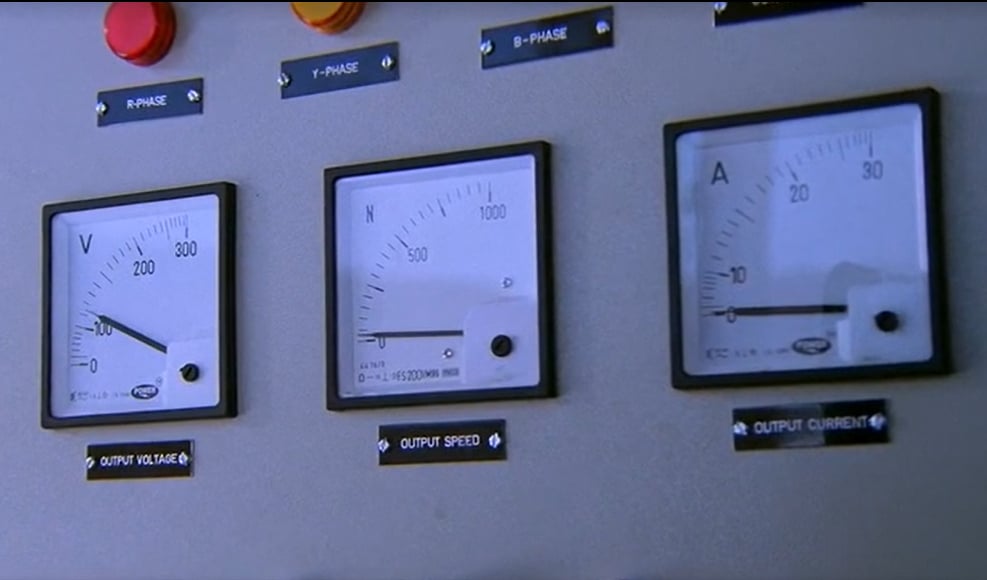
The distribution board attached to the generator has 3 gauges that read voltage, current and output speed in RPM at the generator shaft. However, only the voltmeter is shown to be functional, even though current is being drawn by test bulbs and the house light.
Similarly, there is no mention of the tailrace to which water is directed after passing the turbine stage. It is assumed to be diverted to the Krishna River in Wai, where the movie is directed.
Final Verdict
To appeal to the masses, the electrification of Charanpur is described succinctly. Omission of certain essential details leaves a lot to assumption, making accurate scientific appraisal difficult.
However, there are no glaring inaccuracies from a scientific standpoint. It is possible to establish a micro-hydroelectric plant along the lines of the movie. Occasional leeway like visible arcing during power transmission can be granted for representation’s sake.
Miscellaneous Trivia
- Mohan was working on a global precipitation measurement (GPM) satellite at NASA. This is shown as being deployed aboard a space shuttle.
- Satellites do not need space shuttles to be put into orbit. This task is achieved by satellite launch vehicles, also known as SLVs. However, space shuttles are the face of global outer-space operations. Thus, its inclusion is essential to establishing gravitas for Mohan’s role at NASA.
- The global precipitation management satellite is a real project. It would eventually be launched in 2014, delayed by nearly 7 years due to manufacturing complications. Thus, it would not have been possible for Mohan to oversee its launch, which is an element of the movie’s timeline.

However, in wake of the 2003 Space Shuttle Columbia disaster, manned missions would not begin for another two years. This makes the 2004 launch historically inaccurate.

A Final Word
From a scientific perspective, the movie leaves a lot of holes we wished were plugged. However, as the story of a privileged man abandoning his comforts to uplift the disadvantaged, it is certainly an inspirational tale!
References (click to expand)
- The Bilgaon model - www.hinduonnet.com
- (2009) Micro hydroelectric power plant development in the west .... African Journals OnLine
- (2019) Electricity Generation from Micro Hydro Power Plant at MGM .... ripublication.com
- Archetti, R. (2011). Micro Hydroelectric Power: Feasibility of a Domestic Plant. Procedia Engineering. Elsevier BV.
- (2007) the sustainable management of micro hydropower systems for. The California State University
- Hydroelectric Power. The Bureau of Reclamation, and formerly the United States Reclamation Service
- Hydropower Head and Flow - Renewables First. renewablesfirst.co.uk
- Wai topographic map, elevation, terrain - en-in.topographic-map.com

